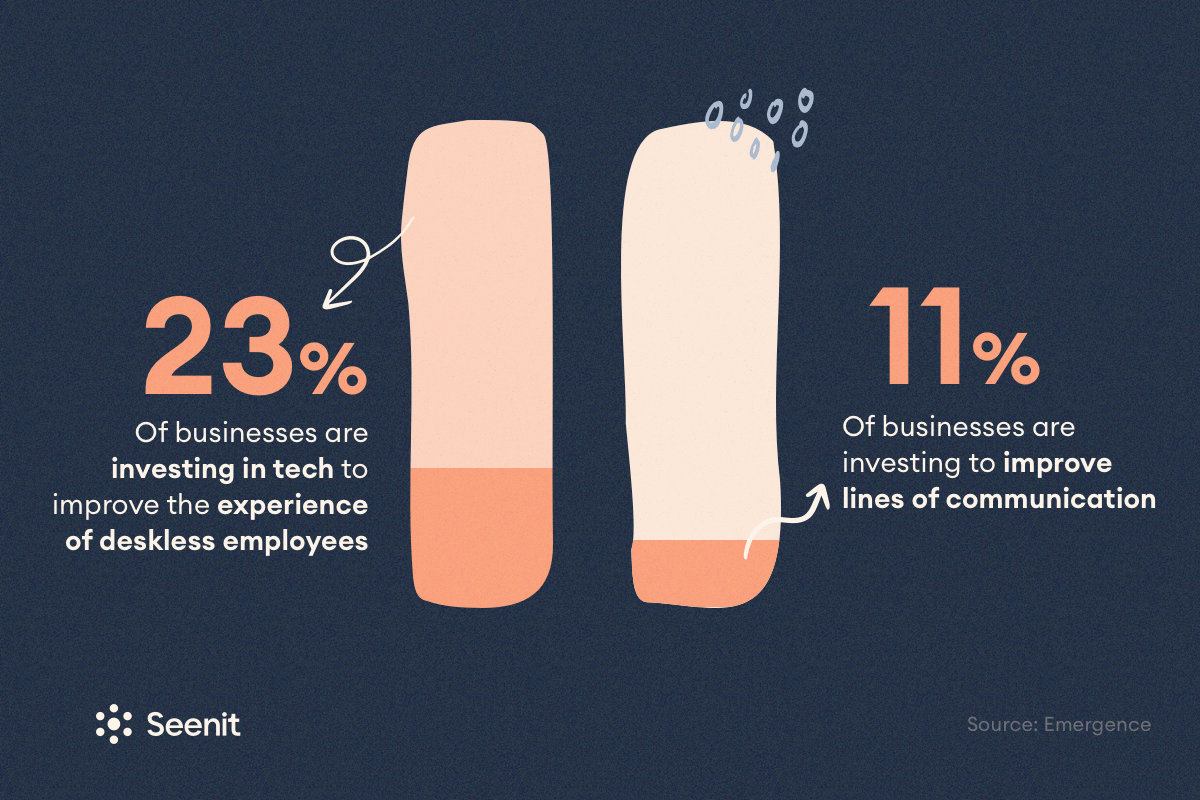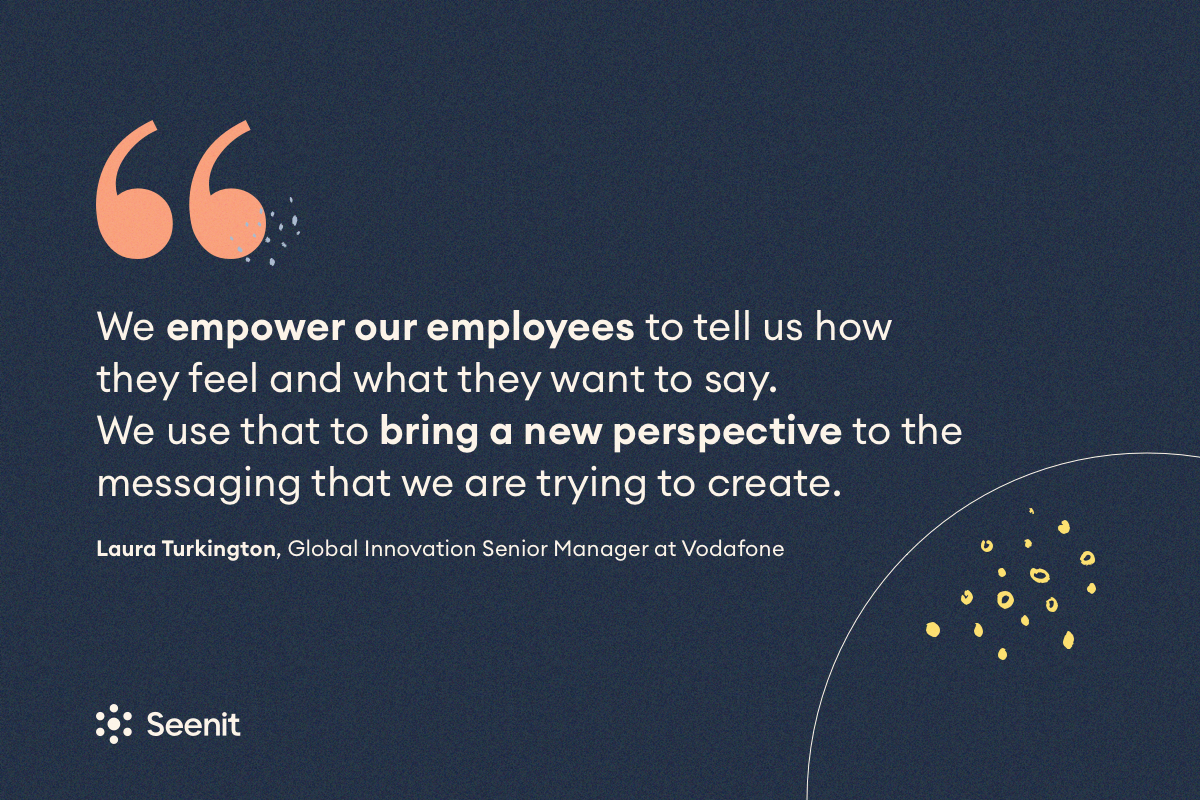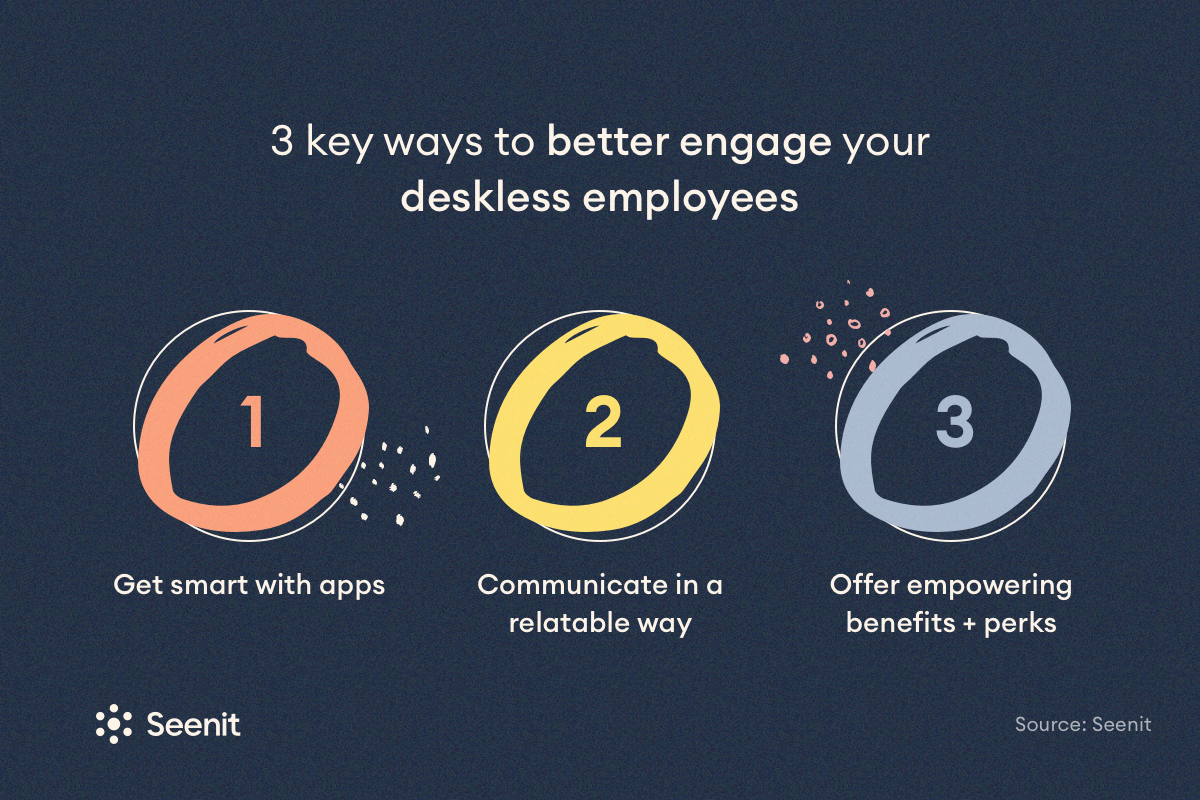The State of Employee Engagement 2023
20 min
We'll send you an email with a link to read the content later.





You’re almost certainly reading this article on a device provided by your employer. Yet, for 80% of the global workforce (source), that wouldn’t be possible. Office workers have benefited from new tech, remote working, and more mental health initiatives due to the Pandemic - yet those without a desk have been left behind.
Consequently, there is a hidden employee engagement crisis brewing among ‘deskless employees’. Addressing the needs of your deskless employees - often front-line workers in the agriculture, education, healthcare, retail, hospitality, manufacturing, transportation, and construction industries - represents one of the biggest employee engagement opportunities for businesses today.
It’s easy to build rapport with your office workers, whether on-site or at home - you simply send a company-wide email, message a Slack channel, or post on the company intranet. Yet it’s much harder to reach deskless workers, for whom these communication channels often don’t exist.
It’s no surprise then that your deskless employees are often less engaged, struggle to buy into brand and company initiatives, and are more likely to leave the business than desk-based workers.

Research from the Workforce Management software company, Quinyx, finds that 37% of deskless employees believe their employers see them as disposable or as temporary workers (source), while 64% are so disillusioned that they’ve considered quitting altogether.
Should those employees move on, your business suddenly loses access to critical skills and experience that might not easily be replaced. It also places pressure on your remaining employees to pick up the slack (potentially pushing those employees towards the exit door, too) while increasing both your recruitment and training costs.It pays to communicate better with your deskless employees and keep them engaged.

Technology can be a powerful ally in engaging your deskless employees; thankfully, tech spending on these workers seems to be on the rise finally. Almost a quarter of businesses (23%) say they are investing in tech to improve the experience of deskless employees, while 11% are investing to improve lines of communication (source).

We live in an age where technology is powerful and portable. Most individuals own a smartphone, wearable, or smart device - and this offers new ways to engage with your deskless employees.
This is the case with the fashion brand H&M, which utilises a social collaboration app from Convo to enable quick and easy communications between on-the-floor employees and the team in the back office (source). Rolling out to 15,000 employees across 500 stores in the US, the app echoes other social platforms to make adoption quick and easy.
”With a geographically dispersed workforce that is 80% mobile, it’s crucial to connect in one place,” noted Luca Michelangeli, marketing manager, H&M USA, in a statement from the app’s launch press release. “[The app’s] interface is similar to other social platforms - when we rolled this out to our employees, they knew how to use it immediately.”
A key challenge with many employer apps is that they often require an email to sign up. Yet H&M’s deskless employees only need a phone number to register and can be kept in the loop via a mobile app, desktop or web browser - in short, email is out and instant messaging is in!
PizzaExpress uses a similar app, called Slice of PE, to communicate messages and updates to its workforce of deskless employees across 350+ restaurants in the UK. This became especially powerful during the pandemic when management and deskless workers could use the app to access key information relating to safety messages, government announcements, and more.
“[It] brought us out of the stone age,” said Jessica Anson, Operational Communication Manager at PizzaExpress in a case study about the tool’s success. “From sharing important company information to uploading training information about operating in a Covid safe environment, we were able to get information to our employees quickly.”
We’ll deliver our latest content straight to your inbox
Content consumption is changing and the current trend is for short-form video content like TikToks and Instagram Stories. Therefore, video can be a powerful ally in communicating with all employees, especially via User Generated Content (UGC). So why not go a step further and invite your deskless employees to make the communications themselves?
Vodafone is one brand leaning into this trend, using UGC from its global workforce to give people from across the business a voice.
“We empower our employees to tell us how they feel and what they want to say,” says Laura Turkington, Global Innovation Senior Manager at Vodafone. “We use that to bring a new perspective to the messaging that we are trying to create.”

Whether you invite sales associates to submit aspirational stories of on-the-floor success, or ask more experienced deskless workers to share tips and advice for new starters, the only limit is your imagination. And it’s also where we can help you out!
We’ve seen teams across the globe utilise Seenit’s easy-to-use video creation software to better engage and motivate all sorts of workers, so why not find out how it could help you engage your deskless employees?
Providing access to training and upskilling opportunities is another way to keep your deskless employees engaged and reduce turnover. One employer leading the way here is Amazon, which partners with education providers across the US to deliver its Career Choice programme, which has helped change the lives of 50,000 US deskless workers to date.
“We believe that everybody who comes to Amazon should be able to build their career, whether they stay with us or leave us,” says Tammy Thieman, Global Director of Amazon Career Choice. “Career Choice provides a real opportunity for employees to build their career through education and make choices based on what’s best for them and how they define career success.”

So there you have it, a whistle-stop tour of three key ways to better engage your deskless employees. Fail to do so and the downsides are obvious, but get it right and you’ll be well on the way to greater engagement, higher productivity, and a more motivated workforce whether at a desk or not.

Reach out today to see how Seenit can help you reach the employees that you might think are unreachable.
Transform your talent attraction and employee engagement with Seenit, the AI-enhanced employee-generated content platform